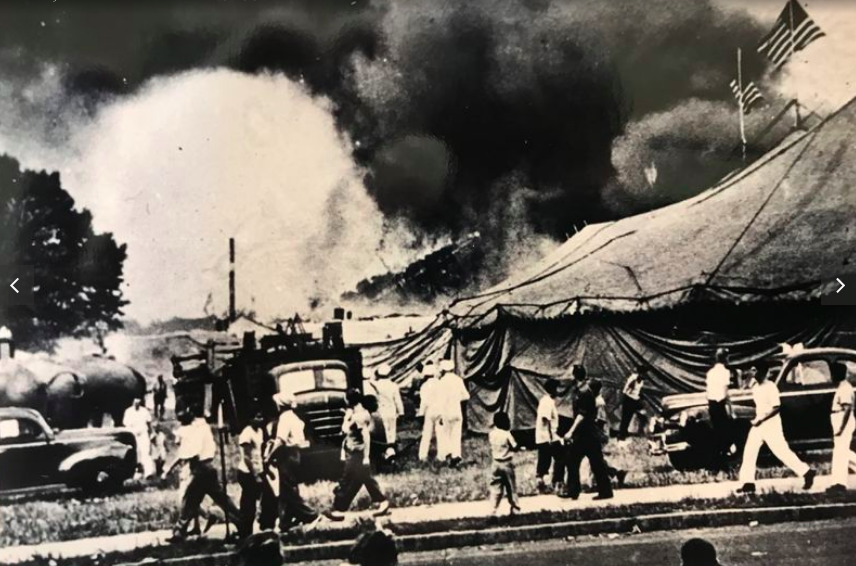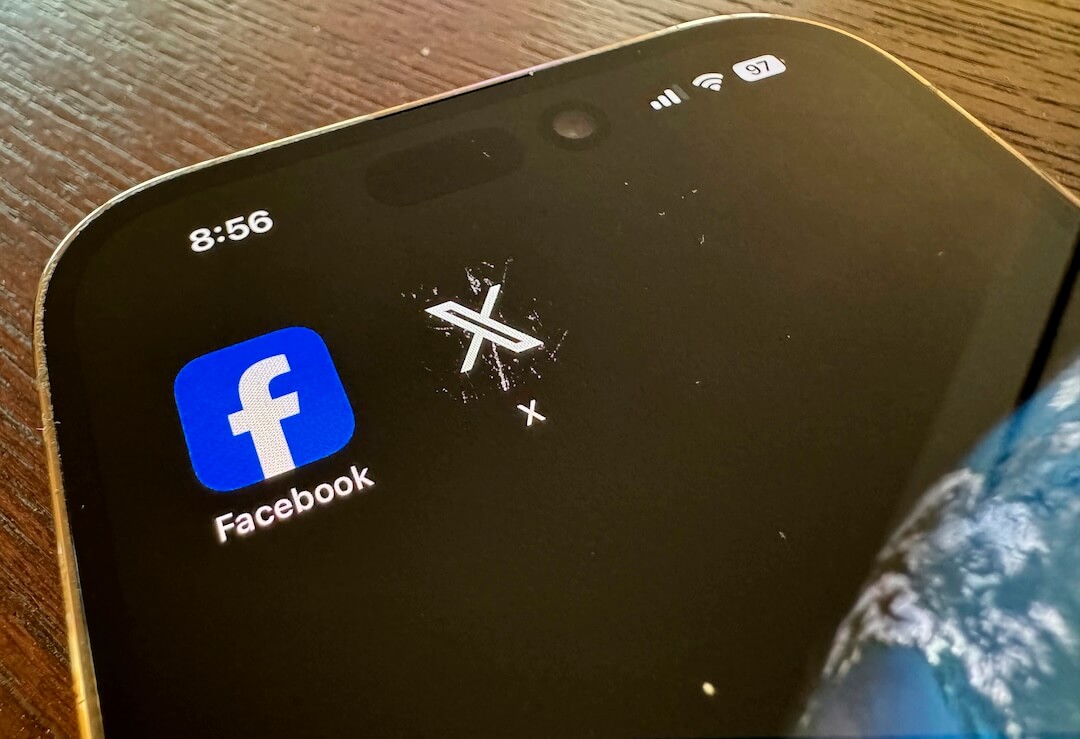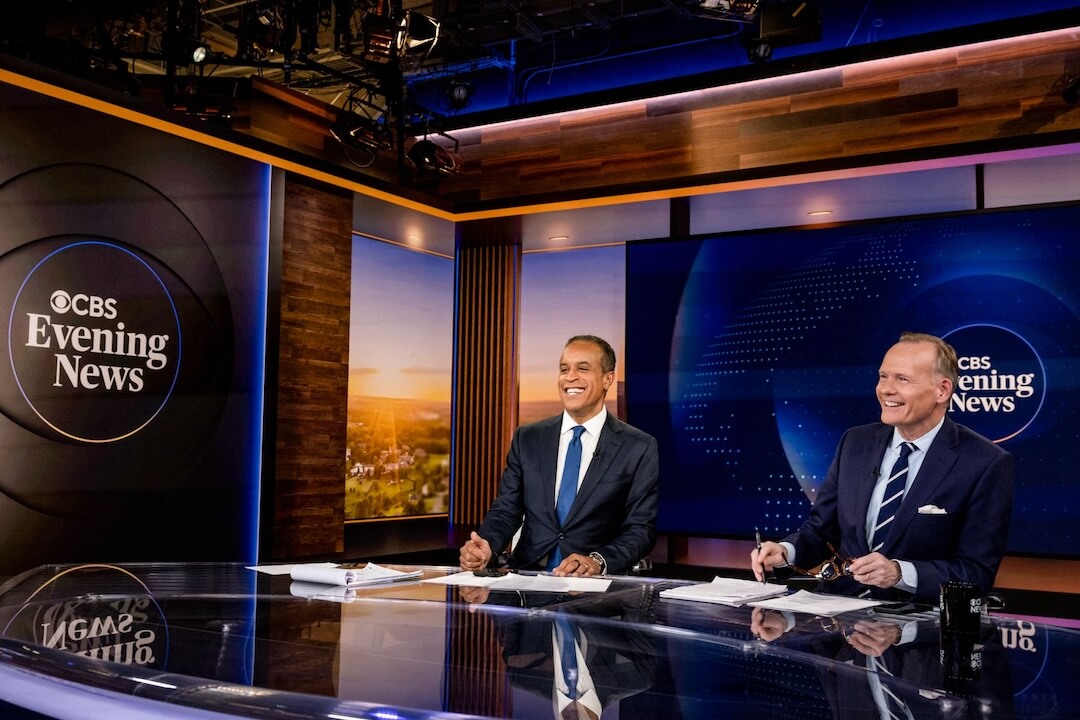Seventy-five years ago, a fire broke out in Hartford, Connecticut.
On July 6, 1944, fire erupted inside the big top at a Ringling Brothers and Barnum and Bailey Circus. One hundred and sixty eight people, including 100 children, were killed. Another 700 were injured, according to the Hartford Courant.
Seventy-five years later, the Courant decided to create a living memorial for the survivors. Staff spent months sifting through state archives. Using old statements, they created a graphic that reenvisioned people inside the tent.
“The circus fire is still talked about in Hartford, mostly because there are still many survivors alive but also because so many people either had relatives who were there or know people who were there and survived,” said investigative reporter Dave Altimari in an email. “It’s a story that has been passed between generations for 75 years.”
This week, we have three examples of local journalism that amplifies people’s voices and experiences. In addition to the Circus Fire project from the Courant, you can also read about a pot podcast from the Miami Herald and a story created with a reader from RI News Today in Rhode Island.
Related: Want more on local news? Sign up for our weekly newsletter, Local Edition
What’s your newsroom working on? Share the work that you’re proud of, and I’ll reach out if we decide to feature it.
All the answers shared here came through a Google form and emails have been edited for length and clarity.
Newsroom: Hartford Courant
Newsroom size: 70+
Project: Circus fire
Who worked on this? Reporting from Dave Altimari, Steven Goode, Kenneth R. Gosselin and Jesse Leavenworth; photography by Mark Mirko; audio production by Michael Hamad; digital production by Megan Merrigan, Sabrina Herrera, Sarah Vukalovic, Chris Moore and Tim Reck.
Answers from: Dave Altimari
How has the Courant covered this anniversary in the past?
The Courant did several major stories in the 1990s around the re-investigation of the origin of the fire as well as the identification of Little Miss 1565 [an unknown child who was identified with that number after the fire]. We have done some survivors’ stories on other anniversaries but nothing on the scope of this project.

Circus fire survivor Alvin Berger pictured with his sister who also survived the fire. (Photo courtesy Hartford Courant)
How did you decide to make an oral history?
We wanted to have a lasting memorial of the circus fire and since many of the survivors are getting very old, we wanted to memorialize their stories while we could for future generations.
Has anything happened or changed since the project published?
We have received calls from several other survivors who want their stories included in the oral history page. The judge is still deciding on the request to exhume two bodies and may now be asked to allow an exhumation of a third one because of our story about the missing little boy Raymond Erickson.

The Hartford Courant interviewed 40 people who survived a deadly fire, including Arthur Lassow, who was 5 the day the fire engulfed the circus. (Photo by Mark Mirko/Hartford Courant)
Newsroom: Miami Herald
Newsroom size: 75
Project: Smoked
Who worked on this? Reporting by Alex Harris and Amy Driscoll; visual and audio by Emily Michot and Matias Ocner; text story editing by Curtis Morgan; social media planning by Adrian Ruhi and Carolina Zamora; audio production by Davin Coburn and Kara Tabor, McClatchy DC.
Answers from: Alex Harris
How did you make this podcast happen?
My reporting partner, Amy Driscoll, and I decided we wanted to try something new for the Miami Herald: a narrative podcast. We worked on weekends and after work and took the occasional day for an interview for months before diving in full time for five months. We’re print reporters, and we learned how to use a recorder and capture our own audio and worked with photo and videojournalists to capture videos and portraits of our sources and our D.C. office to edit and produce the audio to make Smoked, a six-part story of Florida’s relationship with marijuana.

Screenshot, Miami Herald
What did you learn?
Audio is hard! And fulfilling. And a whole new art to learn on the fly. Podcasts are such a fun, emotional medium that allow for fascinating storytelling.
How can other local newsrooms do work like this?
They can single out a great story or interesting person they know about and start collecting good audio from interviews and stacking up research in their spare time. There are free tools to transcribe, edit and promote podcasts that we used a lot.
Tell us more about the tools you used.
We used Temi for some transcriptions. It’s a robot transcriber, not a person, and your first transcription (no matter how long) is free. We got creative with multiple email addresses to use it several times. We also created some promotional audio/video clips for social using the audiogram feature on Headliner.
[the_ad id=”667826″]
Newsroom: RI News Today
Newsroom size: 11
Story: Providence School Condition Shocked Alums Into Action
Who worked on this? Nancy Thomas, founder and editor, and reader Thomas Aquino
Answers from: Nancy Thomas
How did you make this story happen?
Recently, a situation with the destructive disrepair of the Providence schools took over the news cycle. The one thing missing was the visual documentation of this. Remembering some discussion by a high school alum about raising money to repair the auditorium of his beloved high school, I reached out to him on Facebook, and he and I wrote the story — and printed the photos — that graphically showed the disrepair. Once the story came out, I promoted it to a local radio talk show host and the alum went on the radio to talk about it. Since that time, two contractors have stepped forward to volunteer their services and skills. This is a developing story in our state. This week we will publish a colleague’s blog in the voice of a teacher.

Image via RI News Today by Tom Aquino
[the_ad id=”667878″]
What did you learn?
The story would have been powerful — but in this case, the photos carried the story. I also learned that Facebook is an amazing resource for journalists, maybe because those who are prolific yearn for the opportunity to write, and in this case, to have a byline.
How can other local newsrooms do work like this?
Go outside of normal sources. In this case, a strong edit was better than writing it for the alum. It was his story, and I was glad to step into the background on it.
Related: The LA Times made a simple game to help readers understand a complicated issue







